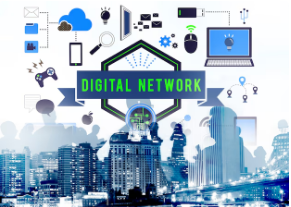In today’s rapidly changing business environment, effective leadership is more crucial than ever. Leaders need to navigate technological advancements, shifting workforce dynamics, and evolving market conditions to guide their organizations toward success. This article explores the qualities of effective leaders, the challenges they face, and the strategies they can use to inspire and motivate their teams in the modern workplace.
The Qualities of Effective Leaders
- Adaptability Modern leaders must be adaptable to thrive in a constantly changing landscape. They need to be open to new ideas, willing to pivot strategies, and capable of leading their teams through transitions smoothly.
- Emotional Intelligence Emotional intelligence (EQ) is the ability to understand and manage one’s own emotions while also recognizing and influencing the emotions of others. High EQ allows leaders to build strong relationships, handle conflicts effectively, and create a positive work environment.
- Visionary Thinking Effective leaders have a clear vision of where they want to take their organization. They can articulate this vision compellingly, inspiring others to share and commit to it. Visionary leaders focus on long-term goals while navigating short-term challenges.
- Empathy Empathy involves understanding and sharing the feelings of others. Empathetic leaders can connect with their team members on a personal level, fostering a supportive and inclusive culture that values each individual’s contributions.
- Decisiveness Leaders often need to make tough decisions quickly and confidently. Decisiveness involves evaluating available information, weighing pros and cons, and taking decisive action. Effective leaders balance caution with boldness to drive progress.
- Integrity Integrity is the foundation of trust and credibility. Leaders who demonstrate honesty, transparency, and ethical behavior earn the respect and loyalty of their teams, creating a culture of trust and accountability.
- Communication Skills Clear and effective communication is essential for leadership success. Leaders must be able to convey ideas, expectations, and feedback clearly and listen actively to understand the perspectives of their team members.
Challenges Faced by Modern Leaders
- Technological Advancements Rapid technological advancements require leaders to stay informed about new tools and innovations that can impact their industry. Leaders must guide their organizations through digital transformation and ensure their teams are equipped with the necessary skills.
- Remote and Hybrid Work The rise of remote and hybrid work models presents challenges in maintaining team cohesion, communication, and productivity. Leaders need to find ways to foster collaboration and engagement despite physical distances.
- Diverse Workforce Today’s workforce is more diverse than ever, encompassing different generations, cultures, and backgrounds. Leaders must cultivate an inclusive environment that values diversity and promotes equal opportunities for all employees.
- Mental Health and Well-being Employee well-being has become a critical concern, especially in the wake of the COVID-19 pandemic. Leaders need to address mental health issues, reduce workplace stress, and create a supportive atmosphere that prioritizes employee well-being.
- Economic Uncertainty Economic fluctuations and uncertainties can impact business stability. Leaders must navigate these challenges by making strategic decisions that ensure financial health while remaining agile to adapt to changing conditions.
Strategies for Effective Leadership
- Foster a Culture of Continuous Learning Encourage continuous learning and development within your team. Provide opportunities for skill-building, professional growth, and knowledge sharing. This not only enhances individual capabilities but also drives innovation and adaptability within the organization.
- Promote Open Communication Create an environment where open communication is encouraged and valued. Regularly solicit feedback, listen to concerns, and engage in transparent discussions. This builds trust and ensures that team members feel heard and valued.
- Lead by Example Demonstrate the behaviors and values you expect from your team. Leading by example sets a standard for others to follow and reinforces the importance of integrity, accountability, and dedication.
- Empower Your Team Empower your team members by delegating responsibilities and trusting them to make decisions. Provide the necessary resources and support, and recognize their achievements. Empowered employees are more engaged, motivated, and committed to the organization’s success.
- Encourage Collaboration and Teamwork Foster a collaborative environment where teamwork is emphasized. Encourage cross-functional collaboration, create opportunities for team-building, and celebrate collective achievements. Strong teamwork leads to better problem-solving and innovation.
- Adapt to Change Proactively Stay ahead of industry trends and be proactive in adapting to change. Encourage a mindset of agility and flexibility within your team. Embrace change as an opportunity for growth rather than a threat.
- Focus on Employee Well-being Prioritize the well-being of your employees by promoting a healthy work-life balance, providing mental health support, and creating a positive work environment. Happy and healthy employees are more productive and loyal.
- Develop Strong Relationships Build strong, authentic relationships with your team members. Show genuine interest in their well-being, career aspirations, and personal lives. Strong relationships foster loyalty and create a sense of community within the workplace.
Conclusion
Effective leadership in the modern workplace requires a blend of adaptability, emotional intelligence, visionary thinking, and strong communication skills. Leaders must navigate the challenges of technological advancements, remote work, workforce diversity, and economic uncertainty while fostering a supportive and inclusive environment. By prioritizing continuous learning, open communication, empowerment, collaboration, and employee well-being, leaders can inspire and motivate their teams to achieve collective success. The role of a leader is not only to guide but also to uplift and empower, creating a thriving organization capable of navigating the complexities of the modern business world.









